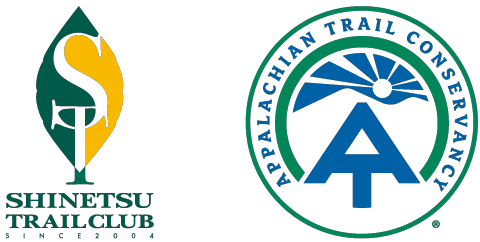- ABOUT
- EXPLORE
- Tips for Hiking the Trail
- General Outlook of the Trail
- Sec.1 (Mt. Madarao - Aka Ike pond)
- Sec.2 (Aka Ike pond - Wakui)
- Sec.3 (Wakui - Hotoke ga Mine Tozanguchi)
- Sec.4 (Hotoke ga Mine Tozanguchi - Sekida Toge pass)
- Sec.5 (Sekida Toge pass - Busuno Toge pass)
- Sec.6 (Busuno Toge pass - Mt. Amamizu)
- Sec.7 (Mt. Amamizu - Mori-Miyanohara Station)
- Sec.8 (Mori-Miyanohara Station - Ketto)
- Sec.9 (Ketto - Koakasawa)
- Sec.10 (Koakasawa - Mt. Naeba)
- Access
- Town Maps
- Visitor Centers
- Guided Hiking
- Stay
- Trail Etiquette
- Hiking Awards
- GET INVOLVED
- NEWS & EVENTS
- FAQ
- Home
- Shin-etsu Trail Stories
- #2: Creating a long trail
Shin-etsu Trail Stories
A team of local people and Kato-san form; full-scale trail-building begins
The work of doing research began in 2000, and the concept of a trail running through the Sekida Mountains began to form.
Koyama-san, major of Iiyama City, was the chairman of a committee including local leaders and experts, as well as local people involved in the mountains, and talk on the Trail began. The committee was not only involved in trail making but also in thoroughly investigating regional history and culture and the condition of the Sekida Mountains, and researching the impact of hiking. Kato-san’s involvement at this time was very important. He held many lectures in Nagano and Niigata in which he conveyed the significance of the long trails to local people.
“Kato-san taught us about the appeal of a long trail, and of the methods for trail management,” Mr. Takano says. The first guideline for the Shin-etsu Trail was that it was to be based on the conservation of biodiversity, something we thought of as one of the pillars of community development and something that Kato-san valued most highly.
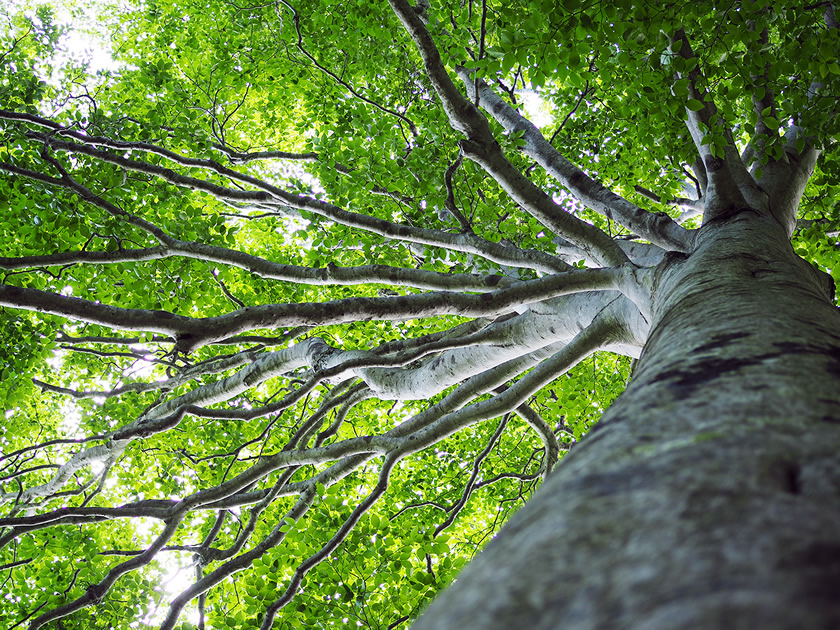
Protecting the local natural environment is strongly integrated into the Shin-etsu Trail philosophy and guidelines
“The guidelines are like our constitution, so we will never deviate from them. For example, people who are involved in tourism, including us, tend to move forward quickly, since we hope to increase the number of visitors as soon as possible. But you can[‘t do this until the systems are ready, and this is something Kato-san put a stop to.
“In addition, the borders of prefectures, cities, towns and villages are decided by people. So even if there is an effort to protect nature, it is going to vary from place to place. I don’t know if this is really good for nature, and that’s why Kato-san always said that we should look at nature in terms of the entire mountain.”
A visit to the US, and the establishment of a management organization: the Shin-etsu Trail Club
In 2003, the committee visiting the Appalachian Trail under the leadership of Kato-san, where they spoke with US government agencies and non-profits, and actually did some maintenance work.
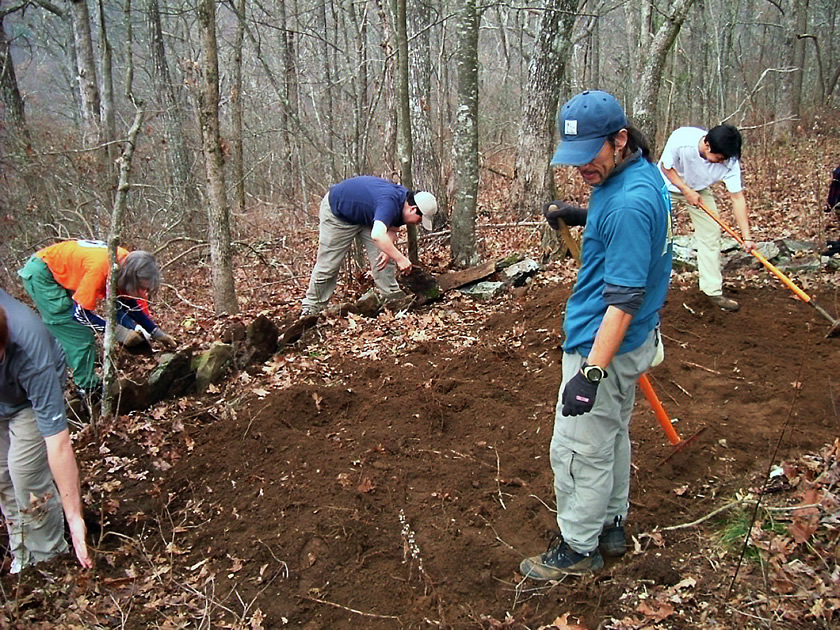
During the inspection of the Appalachian Trail in the US; the visitors also joined in maintenance work with local volunteers
The Appalachian Trail was designated as the first National Trail in the US in 1968. The trail is 3,500 kilometers in length; it is administered by the country through the National Park Service. There is a wonderful structure of cooperation with the private sector, with trail maintenance largely carried out by private volunteers, something that has protected the trail for decades.
A long trail is not just about attracting guests, and there is no point in it being transient. It’s more important that it be rooted in the community over decades, as with the Appalachian Trail. The committee members who went to the US recognized this, and they became convinced that the project would never succeed without the cooperation of the country. Although the scale is different from the Appalachian Trail, creating the Shin-etsu Trail would require that many prefectures and communities would have to cooperate with each other. To achieve it, responsible management organization would also be necessary. This is the thinking behind the establishment of the Shin-etsu Trail Club in the fall of 2003.
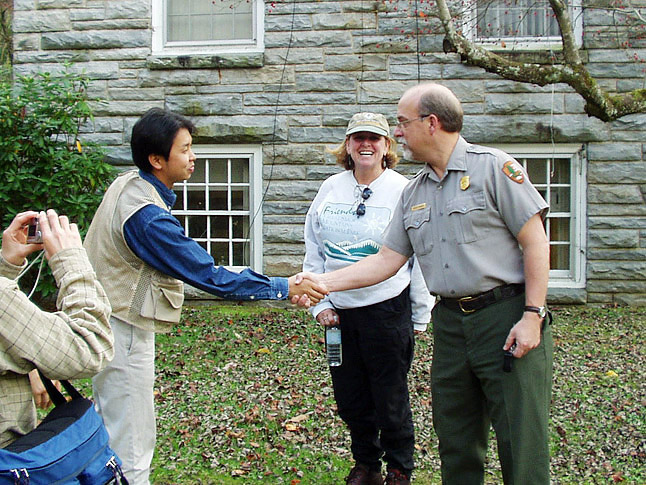
During the inspection of the Appalachian Trail, members spoke directly to US government agencies and non-profits, and learned the methods and philosophies for maintaining long trails.
The first case in Japan for an agreement between the government and a non-profit
In October of 2004, the Shin-etsu Trail Club concluded an agreement for cooperation on trail maintenance with the Forestry Agency and the Kanto Forest Management Bureau. This was the first time in Japan when the national government signed an agreement with a non-profit.
“We were fortunate that the people of Japan were positive, and supported of creating the Trail from the planning stage,” Mr. Takano says. “Usually for maintenance, the flow is to apply for permission one by one, and then entering once one has been completed. But by signing this agreement, the work goes smoothly because, during the season, you can apply for a maintenance plan for the period. This accelerated trail maintenance.”
Takano-san added that the presence of Hiroshi Kimura, the current representative director of the Shin-etsu Trail Club, whom Koyama-san spoke with during the building of the Nabekura Kogen Mori no Ie, was indispensable.
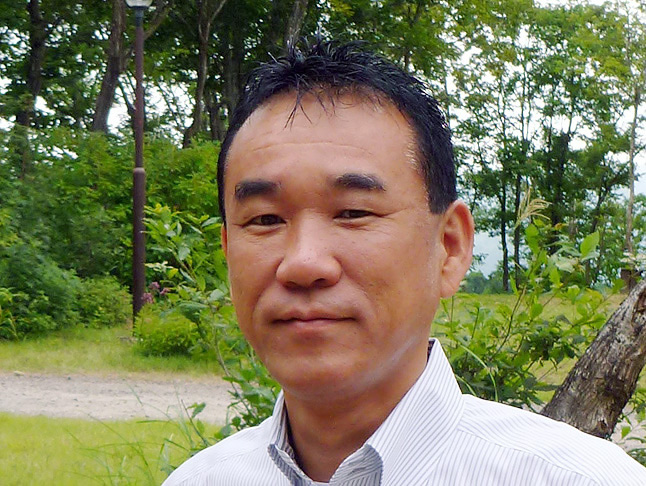
Hiroshi Kimura was precise about the quality of the Shin-etsu Trail “product” and was one of the key players in its foundation
“Kimura-san used to run a small hotel in Madarao Kogen after working for a resort development company, so he has a solid philosophy of service,” Mr. Takano says. “If a sign is tilted just a bit, he will very strongly point it out. For him, the Trail is a ‘product.’ Having people walk through is a ‘service,’ so you have to have good quality control. So we are thinking about how we deal with customers, and how to make them happy. This position is very useful when we are training guides.”
Kimura-san left an urban area to settle in Madarao Kogen, Iiyama City. That’s why he has an outsider’s perspective that is sensitive to the region’s charm. Because of his ability to see the attractions with a fresh eye in a way locals might not, he made it possible to provide high-quality service.
The hardest part for locals is understanding the value of the Trail
Naturally, there were various worries among local people about creating a long trail something not well known in Japan. “The hardest part was in getting the local people to understand,” Mr. Takano says.
“At the time, there were more than 90 villages along the Trail. We sent a questionnaire to all the local leaders asking them what their concerns were about the building of the Trail. The rice fields are close by, so there’s concern about human waste, and where will they get water—I heard things like this.
We also held evening information sessions in each area where we talked. What happens if the mountains get eroded? What happens if they pick wild vegetables? Won’t people throw garbage away? I heard a lot of tough questions like this.”
As was expected, it’s difficult to eliminate all worries. While promising to resolve issues, the Shin-etsu Trail Club secretariat also politely and patiently explained the benefits of creating the Trail. Creating the Shin-etsu Trail would mean that people who haven’t previously visited would pay attention, not only to the Trail but to the area, which will help revitalize it.
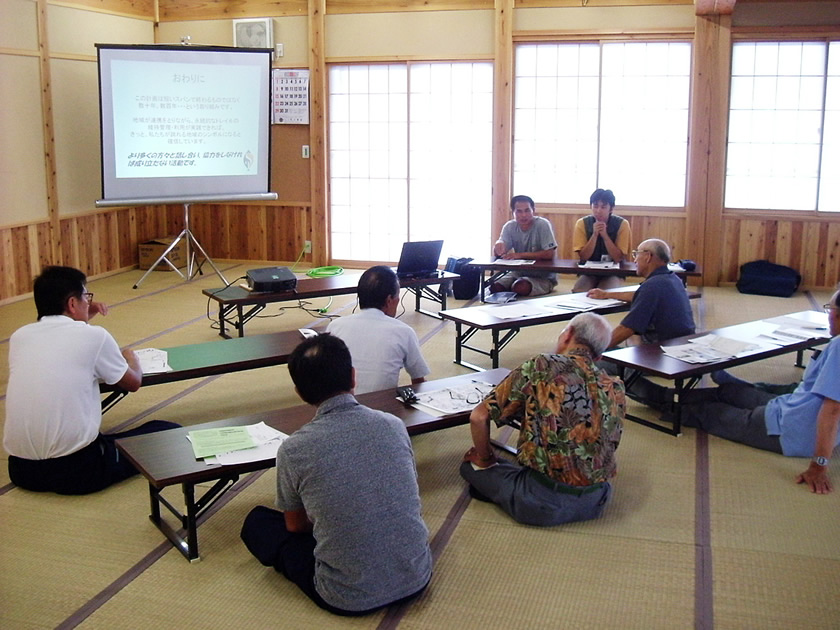
An enthusiastic briefing session for local residents; a relationship of trust is built through ongoing dialogue
“We hold briefing sessions for about an hour and a half, and then have a drink! And that way the discussions go on. Some of the older guys will smile and say, ‘Do you know that there’s a spring flowing from that mountain?’ In the old days everyone was up in the mountains, so I’m really glad people are interested. If we talk for a while, then in the end it’s, ‘Let’s do it!’ This happens all the time.”
Over the course of the year, these kinds of explanations were held with residents. Later on we were able to build the Trail, and later on local people began to help with maintenance, and that was the moment that Takano-san says he felt happiness from the bottom of his heart.
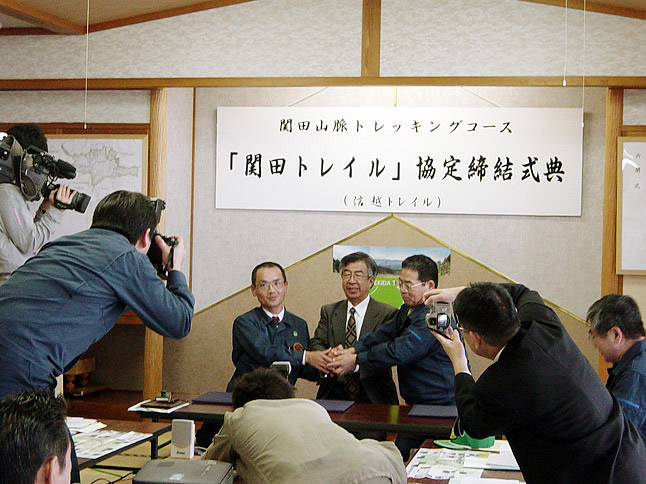
An agreement is concluded with the Hokushin/Joetsu Forestry Management Office
“It was when we started maintenance. I was talking to someone who live across the pass while we were eating lunch. ‘If we didn’t have this opportunity,’ he said ‘even though we live close to each other we probably would never have met.’ That made me really happy. It’s really important, because this kind of exchange is one of the goals of the project.”
Contributing to regional economic activities is important, Takano-san says, but it’s not the only goal. For example, with the creation of the Shin-etsu Trail, local students and families are also coming to visit.
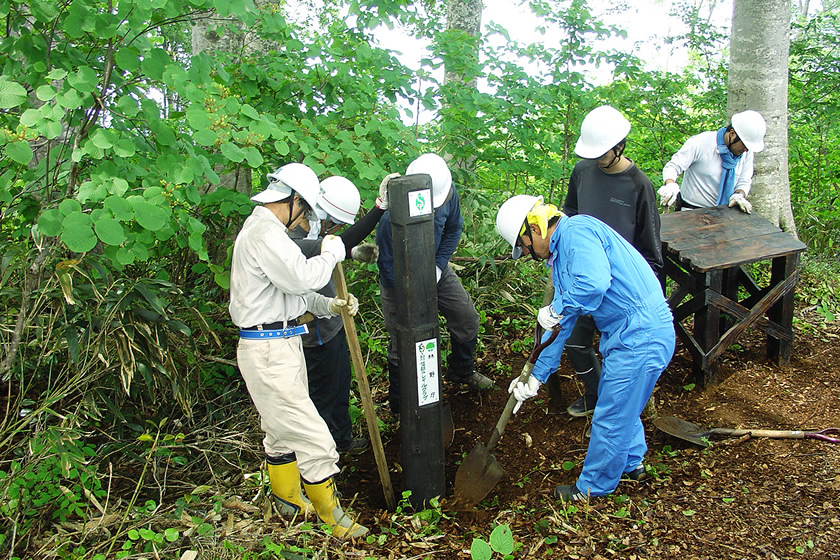
Volunteers set up signposts; now some 400 staff members are involved in maintenance every year
“ ‘In the future I will go to university outside the prefecture, but I will return to Iiyama!’ If more people talk like that, it will be good for the community. The resource of people is the most important thing for people, so I hope this will help. People from outside the prefecture say, ‘This is a wonderful place! You live in a magnificent environment!’ When you hear this, you will feel pride. I thought that this ‘reimporting of value’ is also a very important thing.”
A Trail completed over eight years
In this way, over the eight years from 2000 to 2008, the Shin-etsu Trail was constructed. And, since its opening in 2008, the number of people walking the Trail has steadily increased. Today the Trail is visited by some 35,000 people each year.
“Walking on a long trail should be introduced not as an outdoor activity, but we need to think instead of how to instill a walking culture,” Mr. Takano says. “That is also important for regional revitalization, and I don’t think many trails are focused on that.”
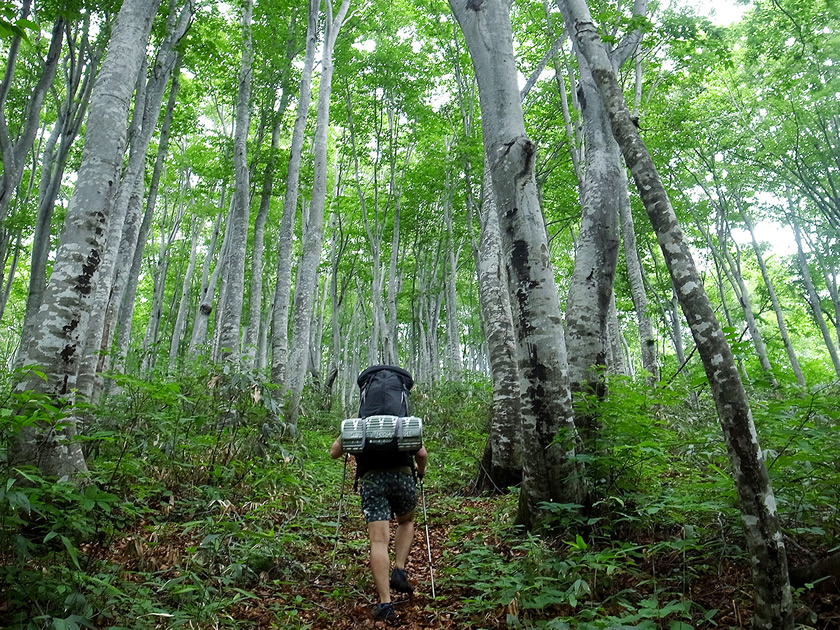
The Shin-etsu Trail, which has become a model for later long trails in other parts of Japan
How do you create a long trail that is firmly rooted in the local community; how can maintenance be continued over many years? Without answers to these questions, it is difficult to create a long trail. It is for these reasons that Shin-etsu Trial is so successful. It is also because, before the project even began, Koyama-san, the former mayor of Iiyama City, was building a foundation for the use of nature and community development. It’s not just about long trails but also about the attractions of the area—that is very important.
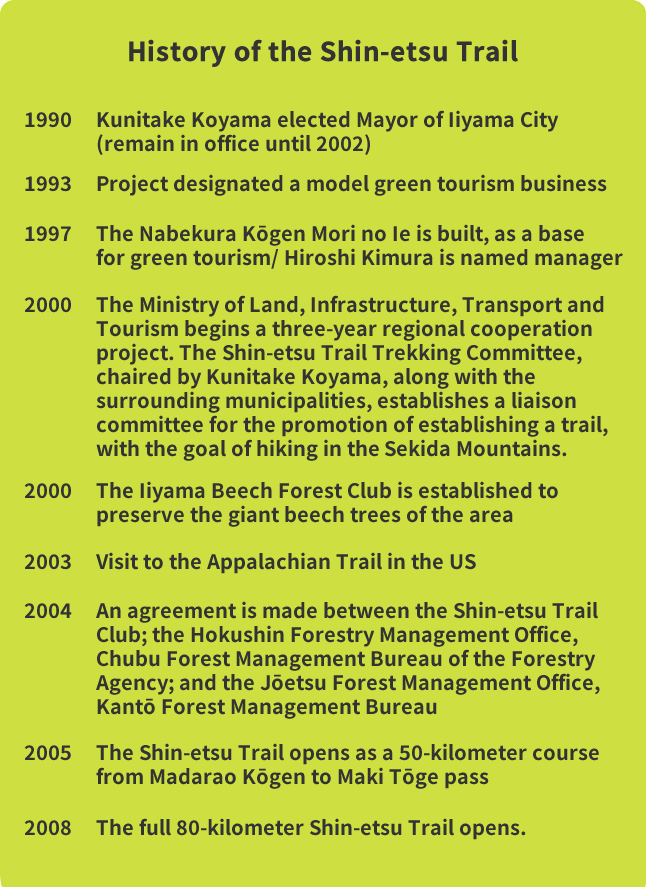

Trails: web magazine spreading trail culture
Trails was created by a group of people who are fascinated by trails and trail life. Trails was Japan's first trail-culture magazine, writing stories to get hikers and runners rushing out to the trails and introducing exciting outdoor shops, gear makers and more. The Trails editorial team is in contact with people involved with trails all over the world, both famous and unknown, and provide a unique perspective in their trail reports and gear reviews.
https://thetrailsmag.com
INDEX
- #01: Noriyoshi Kato InterviewEncounter the miracle on the Trail
- #02: Creating a long trailThe story behind the birth of the Shin-etsu Trail
- #03 Volunteers continue to protect the TrailHow to build and maintain a long trail
- #4 A long trail created by local peopleWorking to create a trail loved by locals
- #5 The life of Noriyoshi KatoA rebellious spirit, and a hope for long trails
- #6: Report on route extensionA look at the new 40-kilometer section


